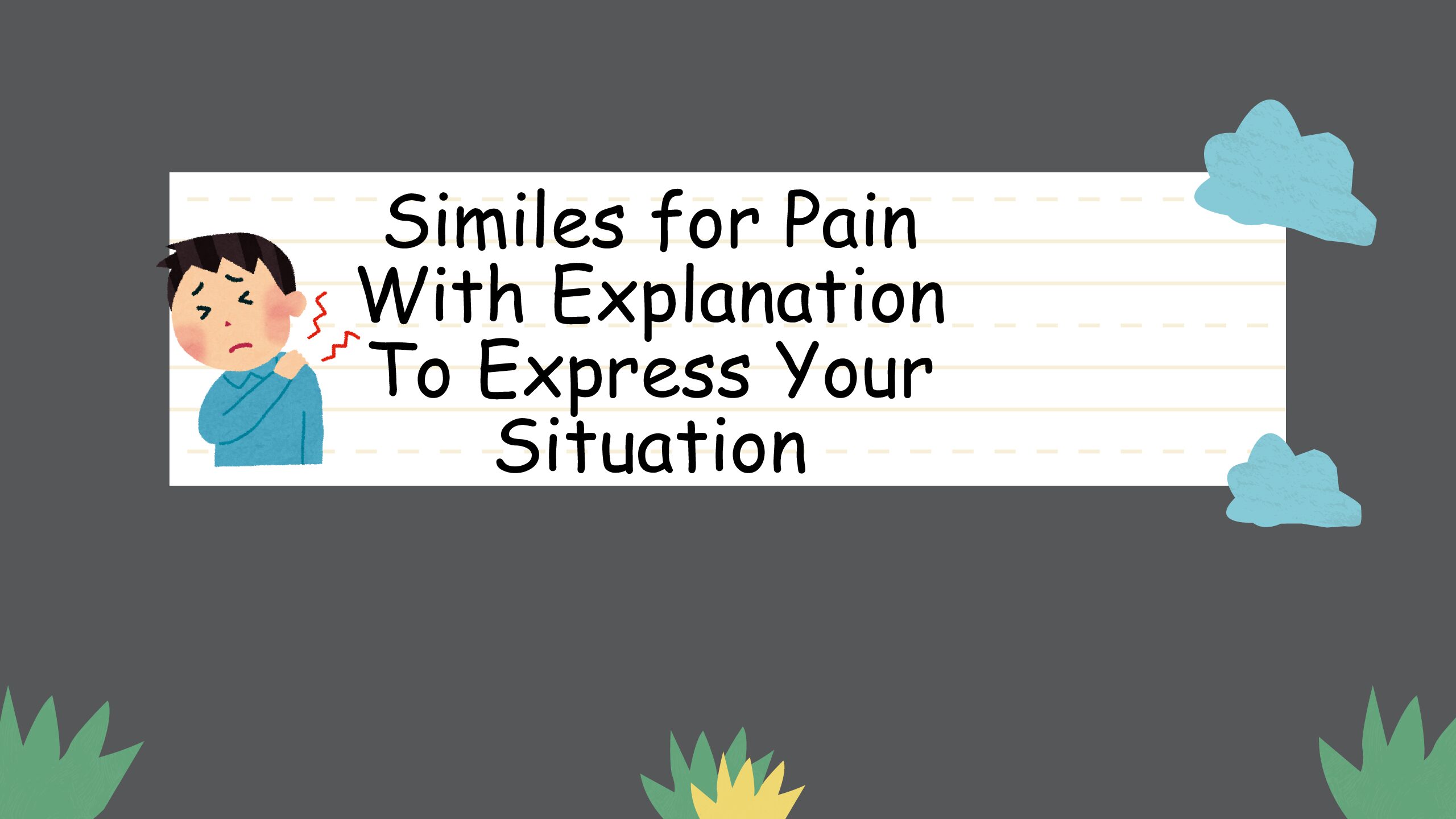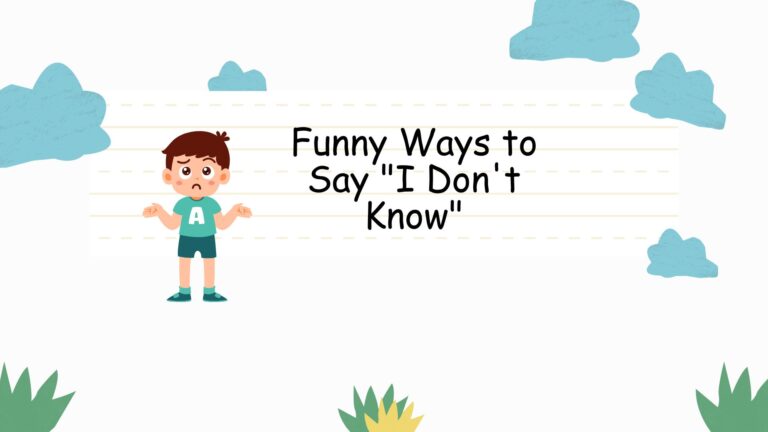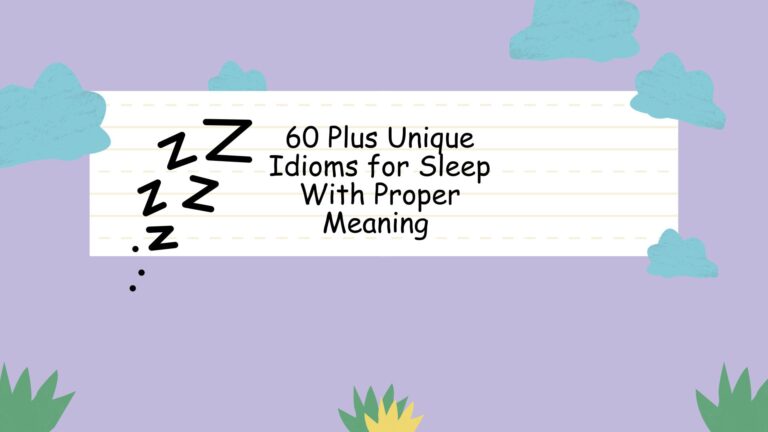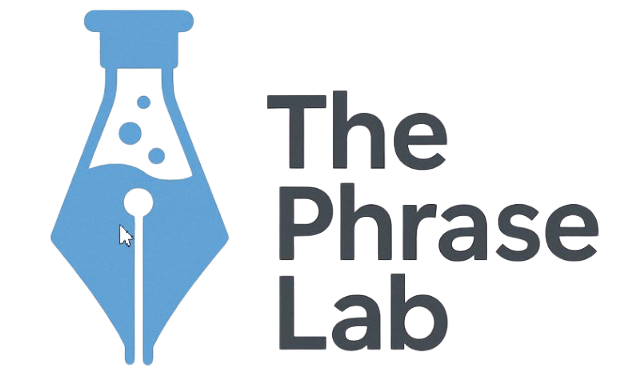
Beyond “Let Me Know”: Alternative Ways to Offer Assistance
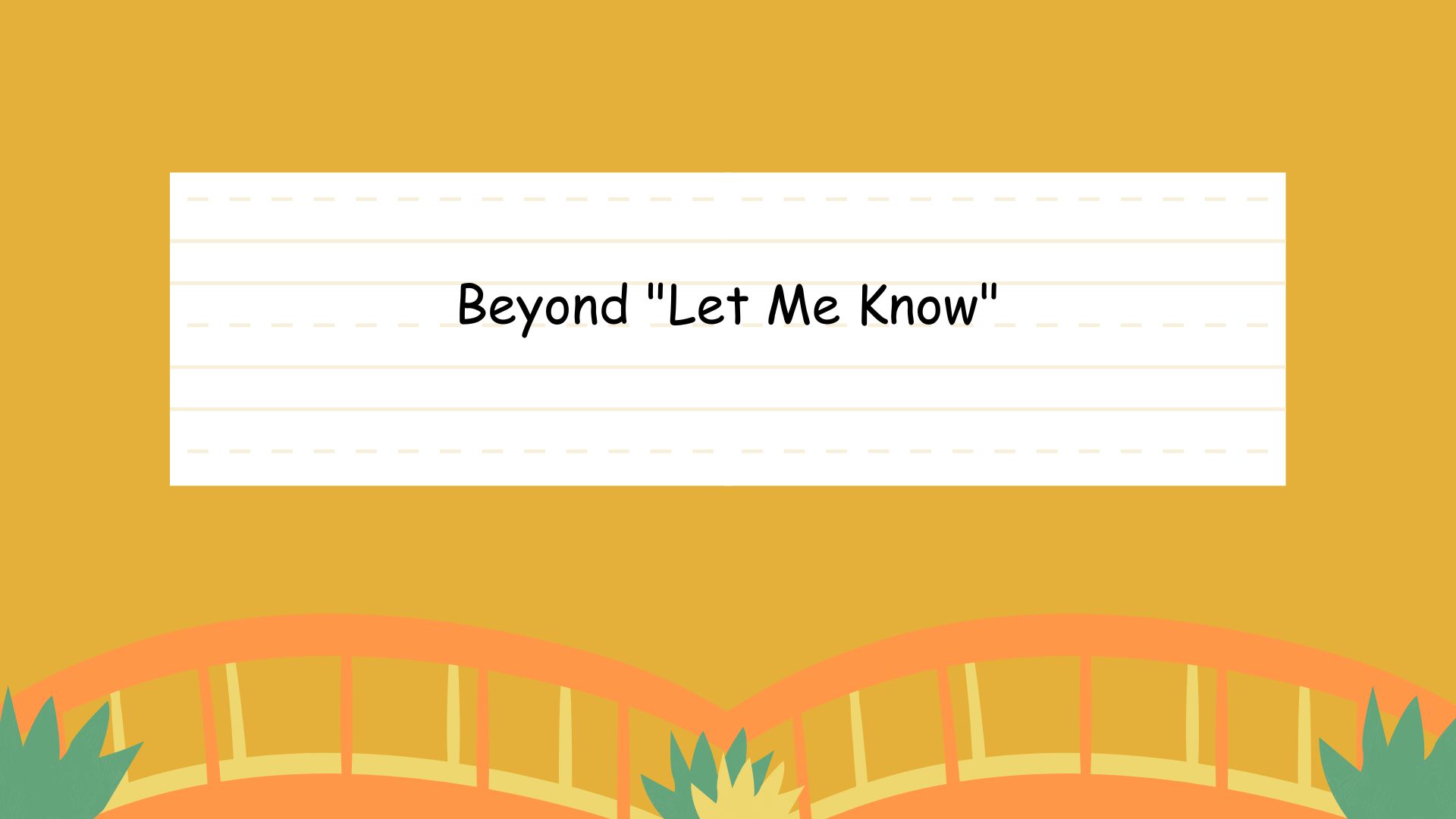
Offering assistance and encouraging questions are crucial aspects of effective communication, whether in professional, academic, or personal settings. While the phrase “Let me know if you have any questions” is perfectly acceptable, relying on it exclusively can make your communication sound repetitive and less engaging. This article explores a wide range of alternative phrases and expressions that convey the same sentiment, adding nuance, clarity, and a personal touch to your interactions. Understanding these alternatives will not only enhance your communication skills but also make you a more approachable and effective communicator. This guide is beneficial for students, professionals, ESL learners, and anyone looking to improve their communication repertoire.
This article dives deep into the various ways you can offer help and invite questions, providing clear definitions, structural breakdowns, numerous examples, usage rules, common mistakes, and practical exercises to solidify your understanding. By the end of this guide, you’ll be well-equipped to express your willingness to help in a variety of contexts, making your communication more dynamic and impactful.
Table of Contents
- Introduction
- Definition and Explanation
- Structural Breakdown
- Types and Categories of Alternatives
- Examples
- Usage Rules
- Common Mistakes
- Practice Exercises
- Advanced Topics
- FAQ
- Conclusion
Definition and Explanation
The phrase “Let me know if you have any questions” is a polite way of indicating your willingness to provide further information or clarification. It serves as an invitation for the recipient to seek assistance or express any concerns they might have. The phrase is ubiquitous across various communication mediums, including emails, presentations, and conversations. However, its frequent use can sometimes lead to a lack of originality and impact.
The function of this phrase is twofold: first, it reassures the recipient that help is available if needed; second, it encourages them to actively engage and seek clarification rather than remaining passive or confused. It’s a crucial element in fostering open communication and building rapport. Understanding the underlying purpose of the phrase allows us to explore more nuanced and contextually appropriate alternatives.
Classifying this type of expression, we can consider it a form of phatic communication, which serves to establish and maintain social relationships rather than convey substantive information. While it does offer assistance, the primary function is to create a welcoming and supportive communicative environment. The context in which it is used significantly influences its interpretation and effectiveness. For instance, in a formal business setting, a more professional tone might be preferred, while in a casual conversation, a more relaxed and friendly approach would be appropriate.
Structural Breakdown
The basic structure of “Let me know if you have any questions” can be broken down into three key components:
- Imperative Clause: “Let me know” – This is a command or request directed at the recipient. It instructs them to inform the speaker.
- Conditional Clause: “if you have any questions” – This sets the condition under which the recipient should contact the speaker. It specifies that the recipient should only reach out if they have questions.
- Implied Offer of Assistance: The entire phrase implies an offer to answer the questions and provide help.
Variations of this structure can be achieved by modifying each of these components. For example, instead of “Let me know,” you could use “Feel free to ask” or “Don’t hesitate to reach out.” The conditional clause can also be rephrased as “if anything is unclear” or “if you need further clarification.” The implied offer of assistance can be made more explicit by adding a phrase like “I’m happy to help.”
Understanding this structural breakdown allows us to deconstruct the original phrase and create new alternatives by substituting different components. This approach provides a systematic way to expand your communication toolkit and tailor your message to specific situations.
The flexibility in restructuring also allows for varying levels of formality. For instance, a formal version might be “Please do not hesitate to contact me should you require further assistance,” while an informal version could be “Just shout if you need anything.” The key is to maintain the core function of offering help and encouraging questions while adapting the language to the context and audience.
Types and Categories of Alternatives
There are several ways to categorize alternatives to “Let me know if you have any questions.” Here are four main categories:
Direct Invitations for Questions
These phrases explicitly invite the recipient to ask questions.
Offering Assistance
These phrases focus on offering help and support.
Expressing Availability
These phrases highlight the speaker’s willingness to be contacted.
Encouraging Further Communication
These phrases promote continued dialogue and engagement.
Examples
The following sections provide examples for each category, showcasing the versatility of alternative phrases.
Direct Invitations Examples
These examples directly encourage the recipient to ask questions. Consider the following table:
| Phrase | Context |
|---|---|
| Feel free to ask if anything is unclear. | Formal presentation, email to colleagues |
| Don’t hesitate to ask any questions. | Meeting, training session |
| Please ask if you need clarification. | Written instructions, academic paper |
| Any questions? | Informal meeting, quick check-in |
| What questions do you have? | Q&A session, classroom setting |
| Do you have any questions? | General inquiry, conversation starter |
| What are your thoughts? | Brainstorming session, gathering feedback |
| Is there anything I can clarify? | After explaining a complex topic |
| What further questions do you have? | Following up on previous discussion |
| If anything is unclear, please let me know. | Formal document, official communication |
| I’m happy to answer any questions you may have. | Welcoming questions, customer service |
| Please feel free to inquire about anything. | Formal setting, offering comprehensive assistance |
| What’s on your mind? | Informal conversation, inviting open discussion |
| Don’t be shy, ask away! | Informal setting, encouraging participation |
| I’m here to answer your questions. | Designated Q&A, customer support |
| What are your concerns? | Addressing potential issues, problem-solving |
| Is there anything that doesn’t make sense? | Ensuring understanding, teaching context |
| I’m open to any questions you might have. | Creating an inclusive environment |
| Please don’t hesitate to reach out with your questions. | Formal communication, emphasizing availability |
| I encourage you to ask if anything is unclear. | Emphasizing the importance of clarity |
| What questions do you still have? | After addressing some questions, seeking further inquiries |
| Feel free to probe me with questions. | Encouraging thorough investigation |
| What queries do you have for me? | Formal setting, soliciting questions |
| If anything remains uncertain, please ask. | Formal instruction, ensuring comprehension |
| I’m ready for your questions. | Signaling readiness, inviting engagement |
These phrases are suitable for various contexts, from formal presentations to casual conversations. Choose the phrase that best fits the situation and your relationship with the recipient.
Offering Assistance Examples
These examples focus on providing help and support. Consider the following table:
| Phrase | Context |
|---|---|
| I’m here to help if you need anything. | Offering general support, team environment |
| Let me know how I can assist you. | Offering specific help, service-oriented role |
| I’m available to provide further assistance. | Formal setting, emphasizing availability |
| If you need any help, just let me know. | Informal setting, casual offer of support |
| I’d be happy to help in any way I can. | Expressing willingness to assist, positive attitude |
| Please don’t hesitate to ask for assistance. | Formal setting, encouraging help-seeking behavior |
| I’m happy to provide more information if needed. | Offering additional details, informative context |
| How can I be of assistance? | Formal inquiry, service-oriented approach |
| I’m at your service. | Formal setting, emphasizing dedication to help |
| Reach out if you need a hand. | Informal setting, offering practical help |
| I’m ready and willing to assist you. | Formal setting, emphasizing commitment to help |
| If you encounter any difficulties, please let me know. | Anticipating potential problems, proactive support |
| I’m always here to lend a hand. | Informal setting, emphasizing ongoing support |
| Consider me a resource for any questions you have. | Positioning oneself as a helpful source of information |
| I’m here to support you in any way possible. | Emphasizing comprehensive support, team-oriented |
| Don’t struggle in silence; let me know if you need help. | Encouraging proactive help-seeking, empathetic approach |
| I’m committed to helping you succeed. | Expressing dedication to the recipient’s success |
| Please feel free to leverage my expertise. | Offering specialized knowledge, professional context |
| I’m prepared to assist you with any challenges. | Anticipating potential difficulties, proactive support |
| Let me know if there’s anything I can clarify for you. | Offering to simplify complex information |
| I’m on standby to provide any necessary assistance. | Signaling readiness, emphasizing availability |
| How can I make this easier for you? | Focusing on simplifying tasks, user-centered approach |
| My goal is to support you effectively. | Expressing dedication to providing helpful assistance |
| I’m eager to help you navigate any challenges. | Enthusiastic offer of support, proactive approach |
| Let me know if you need me to elaborate on anything. | Offering to provide more detailed explanations |
These phrases are particularly useful when you want to emphasize your willingness to go the extra mile to help the recipient.
Expressing Availability Examples
These examples highlight your willingness to be contacted. Consider the following table:
| Phrase | Context |
|---|---|
| I’m available if you need to reach me. | General availability, email signature |
| Feel free to contact me anytime. | Informal setting, open communication |
| You can reach me at [phone number] or [email address]. | Providing contact information, clear communication |
| I’m usually available between [time] and [time]. | Specifying availability, managing expectations |
| Don’t hesitate to get in touch. | General encouragement, friendly tone |
| I’m always reachable if you need anything. | Emphasizing constant availability, supportive role |
| You can find me in [location] if you need me. | Specifying physical availability, workplace setting |
| I’m just a phone call away. | Informal setting, emphasizing ease of contact |
| I’m here whenever you need me. | Expressing unwavering support, personal connection |
| Please feel free to connect with me on [platform]. | Offering alternative communication channels |
| I’m available to chat whenever you’re ready. | Emphasizing willingness to discuss, flexible timing |
| You can ping me anytime on [messaging app]. | Informal setting, quick communication channel |
| I’m on call if you have any urgent questions. | Emphasizing immediate availability, critical situations |
| My door is always open if you need to talk. | Informal setting, encouraging open communication |
| Consider me your go-to person for any questions. | Positioning oneself as a primary contact, reliable resource |
| I’m readily available to address any concerns. | Formal setting, emphasizing responsiveness |
| You can count on me to be available when you need me. | Expressing reliability, building trust |
| I’m accessible through various channels, so feel free to reach out. | Offering multiple communication options, convenience |
| My lines are always open for any inquiries. | Formal setting, emphasizing accessibility |
| I’m committed to being available to support your needs. | Expressing dedication, prioritizing support |
| Feel free to schedule a call with me if that’s easier. | Offering a structured communication option |
| I’m always checking my email, so don’t hesitate to reach out. | Assuring prompt responses, email communication |
| You can always find me at [location] during business hours. | Specifying availability, workplace setting |
| I’m here and ready to assist whenever you need me. | Signaling readiness, emphasizing support |
| Don’t hesitate to flag me down if you see me. | Informal setting, physical availability |
These phrases are useful for ensuring the recipient knows how and when to contact you.
Encouraging Communication Examples
These examples promote continued dialogue and engagement. Consider the following table:
| Phrase | Context |
|---|---|
| I look forward to hearing from you. | Ending an email, encouraging a response |
| Let’s continue this conversation if you have more questions. | Encouraging further discussion, ongoing dialogue |
| I’m always open to further discussion. | Promoting open communication, collaborative environment |
| Please keep me informed of your progress. | Monitoring progress, project management |
| I value your feedback, so please share any thoughts you have. | Encouraging feedback, valuing input |
| I welcome any questions or comments you may have. | Encouraging participation, open forum |
| Let’s keep the lines of communication open. | Emphasizing ongoing dialogue, team environment |
| I encourage you to share any concerns you may have. | Promoting transparency, addressing potential issues |
| I’m interested in hearing your perspective. | Valuing opinions, collaborative discussion |
| Please feel free to contribute your thoughts and ideas. | Encouraging participation, brainstorming session |
| I’m always eager to learn from your insights. | Valuing knowledge, collaborative learning |
| Let’s collaborate to find the best solution. | Promoting teamwork, problem-solving approach |
| I’m open to any suggestions you may have. | Encouraging input, collaborative improvement |
| Let’s work together to achieve our goals. | Promoting teamwork, shared objectives |
| I’m here to support your growth and development. | Mentoring role, encouraging progress |
| I value your input and encourage you to share your thoughts. | Emphasizing the importance of feedback |
| Let’s maintain an open dialogue to ensure clarity. | Promoting transparent communication, avoiding misunderstandings |
| I’m committed to fostering a collaborative environment. | Emphasizing teamwork, creating a positive atmosphere |
| I encourage you to voice any concerns or suggestions. | Promoting proactive communication, addressing potential issues |
| Let’s continue to learn and grow together. | Promoting continuous improvement, collaborative learning |
| I look forward to future conversations and collaborations. | Expressing enthusiasm for ongoing engagement |
| Let’s build a strong and supportive working relationship. | Emphasizing the importance of collaboration and trust |
| I’m excited to see what we can achieve together. | Expressing optimism for future collaborations |
| Let’s keep the conversation going to ensure mutual understanding. | Promoting continuous dialogue, avoiding miscommunication |
| I’m always available to listen to your ideas and concerns. | Emphasizing active listening, creating a safe space for communication |
These phrases are particularly useful when you want to build rapport and encourage ongoing communication.
Usage Rules
The appropriate use of these alternative phrases depends heavily on context. Consider the following:
- Formality: Formal settings require more professional language, while informal settings allow for more casual expressions.
- Audience: Tailor your language to your audience’s level of understanding and expectations.
- Purpose: Choose a phrase that aligns with your specific goal, whether it’s to offer help, invite questions, or encourage further communication.
- Relationship: Your relationship with the recipient should influence your choice of words. A close colleague might appreciate a more informal phrase, while a new client might require a more formal approach.
It’s also important to be genuine in your offer of assistance. Insincere offers can damage trust and credibility. Make sure you are truly willing and able to provide the help you are offering.
Pay attention to nonverbal cues as well. Your tone of voice, body language, and facial expressions should all align with your words to convey sincerity and approachability. A warm smile and open posture can go a long way in making the recipient feel comfortable asking questions.
Common Mistakes
Here are some common mistakes to avoid when using alternative phrases:
| Incorrect | Correct | Explanation |
|---|---|---|
| “Let me know if you have any doubts.” | “Let me know if you have any questions.” | “Doubts” can have a negative connotation. |
| “Any questions, feel free.” | “Feel free to ask any questions.” | Incorrect sentence structure. |
| “I’m here if you need.” | “I’m here if you need anything.” | Incomplete sentence. |
| “Don’t hesitate to bother me.” | “Don’t hesitate to contact me.” | “Bother” has a negative connotation. |
| “What’s up?” (in a formal email) | “Do you have any questions?” | Too informal for a formal context. |
| “Holler at me if you need anything.” (in a business presentation) | “Please feel free to contact me if you require assistance.” | Inappropriate level of formality. |
| “Buzz me if you have questions.” | “Feel free to send me a message if you have any questions.” | “Buzz” is outdated and may not be universally understood. |
| “I’m always here for you.” (in a professional email) | “I’m available to assist you with any work-related questions.” | Too personal for a professional context. |
| “If you’re stuck, ping me.” | “If you encounter any difficulties, please send me a message.” | “Stuck” and “ping” are too informal for a formal setting. |
| “Questions?” (without any context) | “Do you have any questions?” | Lacks politeness and clarity. |
By avoiding these common mistakes, you can ensure that your communication is clear, professional, and effective.
Practice Exercises
These exercises will help you practice using alternative phrases in different contexts.
Exercise 1: Choosing the Right Phrase
Choose the most appropriate phrase from the list below to complete each sentence.
Phrases: Feel free to ask, I’m here to help, Don’t hesitate to contact me, What are your thoughts?, I’m available if you need to reach me, How can I assist you?
| Question | Answer |
|---|---|
| 1. After the presentation, __________. | 1. Feel free to ask |
| 2. ________ if you have any technical issues. | 2. Don’t hesitate to contact me |
| 3. ________ on the proposed marketing strategy? | 3. What are your thoughts? |
| 4. ________ with your project. | 4. I’m here to help |
| 5. ________, should you require any further clarification. | 5. I’m available if you need to reach me |
| 6. ________ with this task? | 6. How can I assist you? |
| 7. If you need anything at all, ________. | 7. Feel free to ask. |
| 8. For any further assistance, ________. | 8. Don’t hesitate to contact me. |
| 9. After reviewing the document, ________? | 9. What are your thoughts? |
| 10. I’m always ________ with your assignments. | 10. I’m here to help. |
Exercise 2: Rewriting Sentences
Rewrite the following sentences using an alternative phrase to “Let me know if you have any questions.”
| Original Sentence | Rewritten Sentence |
|---|---|
| 1. Let me know if you have any questions about the assignment. | 1. Feel free to ask if you have any questions about the assignment. |
| 2. Let me know if you have any questions after reading the report. | 2. Don’t hesitate to contact me if you have any questions after reading the report. |
| 3. Let me know if you have any questions about the new policy. | 3. I’m happy to answer any questions you may have about the new policy. |
| 4. Let me know if you have any questions regarding the contract. | 4. Please feel free to inquire about anything regarding the contract. |
| 5. Let me know if you have any questions during the presentation. | 5. Please ask if you need clarification during the presentation. |
| 6. Let me know if you have any questions about the software installation. | 6. I’m here to help if you need anything with the software installation. |
| 7. Let me know if you have any questions about the project timeline. | 7. I’m available if you need to reach me with questions about the project timeline. |
| 8. Let me know if you have any questions about the training materials. | 8. How can I assist you with the training materials? |
| 9. Let me know if you have any questions about the budget proposal. | 9. What are your thoughts on the budget proposal? |
| 10. Let me know if you have any questions about the research findings. | 10. Feel free to probe me with questions about the research findings. |
Exercise 3: Contextual Application
Provide an appropriate alternative phrase for each scenario.
| Scenario | Appropriate Phrase |
|---|---|
| 1. You are a customer service representative assisting a client with a product issue. | 1. How can I be of assistance today? |
| 2. You are a professor concluding a lecture. | 2. Are there any questions before we move on? |
| 3. You are sending an email to a colleague regarding a collaborative project. | 3. I look forward to hearing your thoughts on this. |
| 4. You are a manager offering support to a new employee. | 4. I’m here to help you get settled in. |
| 5. You are concluding a meeting with your team. | 5. Please don’t hesitate to reach out if anything comes up. |
| 6. You are providing instructions for a complex task. | 6. If anything is unclear, please let me know. |
| 7. You are offering technical support to a user. | 7. I’m available to walk you through the troubleshooting steps. |
| 8. You are presenting a proposal to a client. | 8. I welcome any questions or comments you may have at this time. |
| 9. You are mentoring a student and want to encourage them to ask for help. | 9. Don’t struggle in silence; let me know if you need help. |
| 10. You are concluding a training session and want to ensure everyone is comfortable with the material. | 10. Is there anything that doesn’t make sense to anyone? |
Advanced Topics
For advanced learners, consider exploring the nuances of these alternative phrases in different cultural contexts. Communication styles vary across cultures, and what is considered polite in one culture might be perceived differently in another. For example, direct questions might be more common in some cultures, while indirect communication is preferred in others.
Also, consider the use of nonverbal cues in conjunction with these phrases. A warm smile, eye contact, and open body language can enhance the sincerity and effectiveness of your offer of assistance. Conversely, avoid crossing your arms, looking away, or using a dismissive tone of voice, as these can undermine your message.
Finally, pay attention to the power dynamics in the relationship. If you are in a position of authority, be mindful of how your words might be perceived. Encourage open communication and create a safe space for questions to ensure that the recipient feels comfortable seeking help.
FAQ
- Why is it important to use alternatives to “Let me know if you have any questions”?
Using a variety of phrases makes your communication more engaging and less repetitive. It also allows you to tailor your message to the specific context and audience, making your offer of assistance more impactful and sincere. Varying your language also demonstrates a greater command of the English language and enhances your overall communication skills.
- How do I choose the right alternative phrase for a specific situation?
Consider the formality of the setting, your relationship with the recipient, and your specific goal. A formal setting might require a more professional phrase, while an informal setting allows for a more casual expression. Tailor your language to your audience’s level of understanding and expectations. Choose a phrase that aligns with your specific goal, whether it’s to offer help, invite questions, or encourage further communication.
- Are there any phrases I should avoid using?
Avoid phrases that are too informal for a professional setting, such as slang or colloquialisms. Also, avoid phrases that have a negative connotation, such as “Don’t hesitate to bother me.” Be mindful of cultural differences and avoid phrases that might be offensive or confusing to someone from a different background.
- How can I make my offer of assistance more genuine?
Be sincere in your offer and ensure that you are truly willing and able to provide the help you are offering. Pay attention to your tone of voice, body language, and facial expressions to convey sincerity and approachability. A warm smile and open posture can go a long way in making the recipient feel comfortable asking questions.
- What if no one asks any questions, even after I offer assistance?
It’s possible that your explanation was clear and comprehensive, or that people are hesitant to ask questions. You can try rephrasing your offer of assistance or asking more direct questions to encourage participation. For example, you could say, “Is there anything specific you’d like me to clarify?” or “What are your initial thoughts on this topic?”
- How do I handle questions that I don’t know the answer to?
It’s perfectly acceptable to admit that you don’t know the answer. Offer to find out the information and get back to the person. For example, you could say, “That’s a great question, and I don’t have the answer right now, but I’ll look into it and get back to you as soon as possible.”
- How can I encourage more people to ask questions?
Create a safe and welcoming environment where people feel comfortable asking questions. Encourage participation and reassure people that there are no “stupid” questions. Acknowledge and validate questions to show that you value input. You can also use icebreakers or interactive activities to encourage engagement.
- What’s the best way to follow up after offering assistance?
Follow up with the person to ensure that their questions were answered and that they received the help they needed. This shows that you are genuinely invested in their success and that you are committed to providing ongoing support. You can send a brief email or message to check in and offer further assistance if needed.
Conclusion
Mastering alternative ways to offer assistance and encourage questions is an invaluable skill for effective communication. By expanding your repertoire of phrases and understanding the nuances of usage, you can
effectively communicate your willingness to help in various contexts. This not only enhances your communication skills but also fosters stronger relationships and promotes a more collaborative environment. The ability to tailor your language to suit the situation, audience, and purpose will make you a more versatile and impactful communicator in all aspects of your life.

